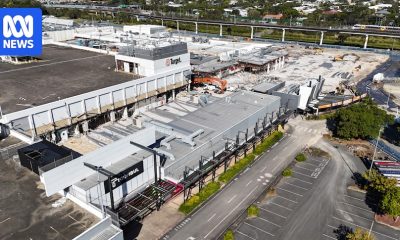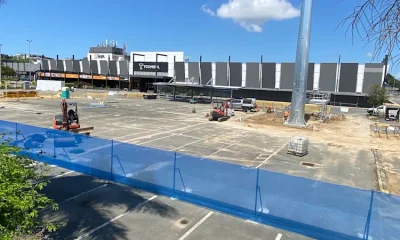Noosa News
#ThrowbackThursday this week celebrates 50 years since the commencement of the Q…

#ThrowbackThursday this week celebrates 50 years since the commencement of the QATB Ambulance Training School in Queensland and the first state-based training course. On the 1st of July 1970, the first QATB Training School began. It was a comprehensive course on the paramedical aspects and in the modern techniques of ambulance services. It followed a course developed by the Institute of Management on management techniques and ambulance administration for Superintendents and was conducted by training officer Cliff Coddington and Registered Nurse Bernice Doig. QATB Superintendents were the main participants, by invitation.
Earlier, in 1959, the State Conference of QATB Committees in Coolangatta formally discussed the issue of advanced ambulance training for the first time, even though the need for training had been an issue since our beginnings in 1892. Other state ambulance authorities were already initiating formal ambulance training. Past State secretary Ernie Bradley recalls that this agenda item was the brainchild of Superintendent R. L. Smith of Childers (formerly of Ingham and later Superintendent of Silkwood), who also suggested an advanced textbook be considered. Past Chief Training Officer Bob McDermant remembers “one of the old Superintendents” standing up and saying: “That old book has done me for the last 60 years and it has all we will need for the next 60 years”. Executive Officers of the NSW Ambulance Service who attended the conference were sufficiently inspired to return home and put in motion the means to start their own training school.
By 1961, centralised state ambulance training schools had been established in both NSW and Victoria. In August 1962, the QATB Executive Committee resolved that a QATB School of Training be established, with a view of ambulance officers being issued with a Diploma on completing the course. The training scheme was to be similar to those in operation in NSW and Victoria. But it was to take a further eight arduous years before the Queensland Training School opened for business, and more than two decades after that before the Associate Diploma was developed. Later in 1962, it was determined that a staff member from each QATB zone attend the school of instruction in NSW and Victoria, and until such time as Queensland could organise its own school of instruction. It was not until 1965, however, that this resolution became a reality.
In early 1965, the QATB Executive Committee accepted an offer by the NSW Ambulance Transport Service Board to allow 22 members of the permanent staff of the QATB to attend the NSW Ambulance Training School. In June that year, 21 QATB staff attended a three-week course at the school. Ernie Bradley recalls that one of the team fell ill on the first day and was taken to hospital. When the rest of the group went to visit him, they saw a defibrillator for the first time. The intention was that those who attended the NSW course would return to Queensland to commence training in their respective districts. Four years later in mid-1969, the QATB State Council Sub-Committee on Training had recommended that a Training School be established in Brisbane, following the kind offer of the Brisbane Committee of the use of accommodation in its Ann Street premises. The sub-committee recommended a proposed training course to be divided into two parts: 'paramedical and operational'; and 'predominantly administration'. Part I of the course was to cover a period of three weeks for less-experienced personnel and two weeks for the more experienced and qualified officers of the Brigade. Part II of the course was intended for Superintendents, Deputy Superintendents and others wishing to qualify for such appointments. Each intake was not to exceed 15 people, with less-experienced officers required to undertake special studies in elementary anatomy and physiology before selection for attendance.
Prior to these events and since 1892, ambulance training had been inconsistent across the state with the more “patient-focused” QATB committees and staff organising lectures from doctors, nurses and pharmacologists as well as hospital and mortuary educational sessions.
Today, Queensland Ambulance Service paramedics are university-qualified to degree and post-graduate levels. Graduate paramedic inductions and specialised qualifications and certifications are conducted in-service by the QAS Education Centre (QASEC).

-

 Noosa News15 hours ago
Noosa News15 hours agoToombul Shopping Centre site thrown lifeline after Mirvac announces sale with ‘priority’ to build new retail centre
-

 General15 hours ago
General15 hours agoAllegations against ex-Attorney-General Mark Dreyfus removed from Linda Reynolds action against Commonwealth
-

 Noosa News17 hours ago
Noosa News17 hours agoMirvac to sell site to Irvine Group
-

 General5 hours ago
General5 hours ago‘Fortune teller’ allegedly defrauds Sydney’s Vietnamese community out of $70 million



